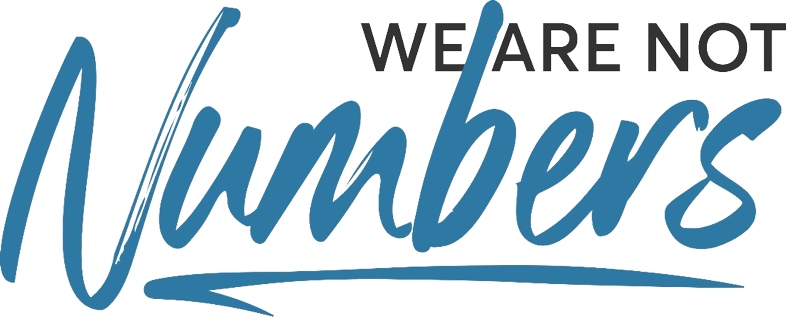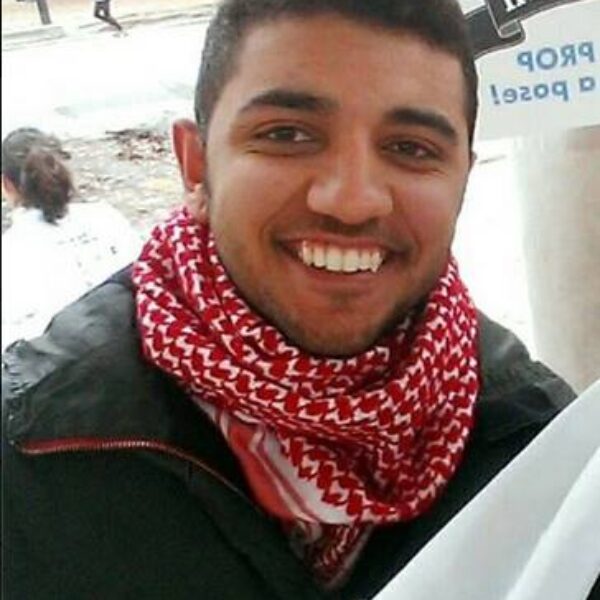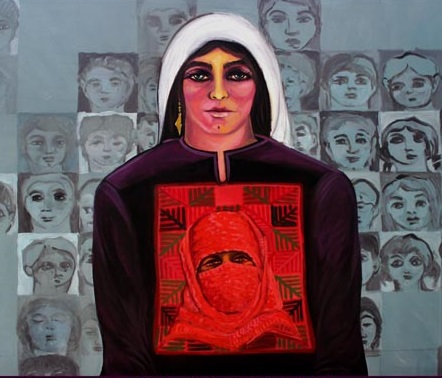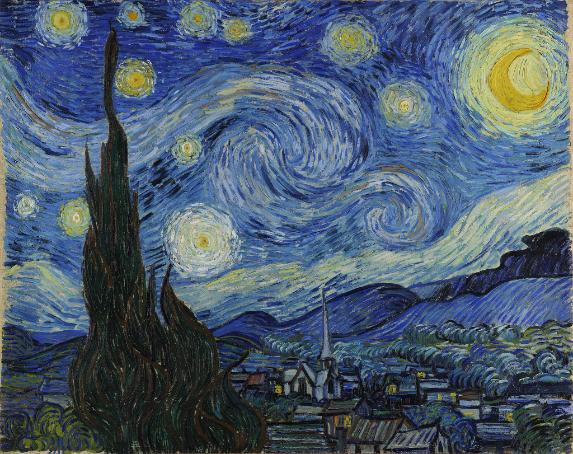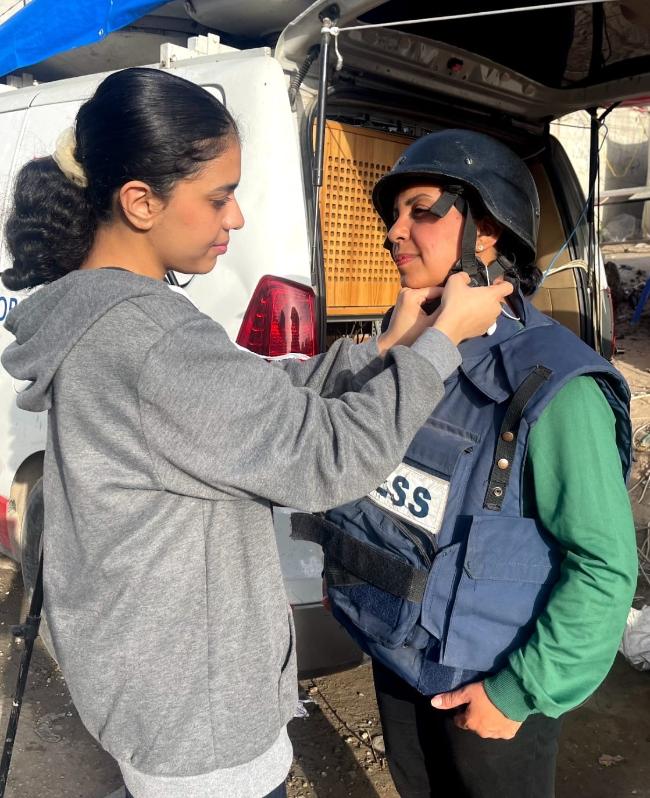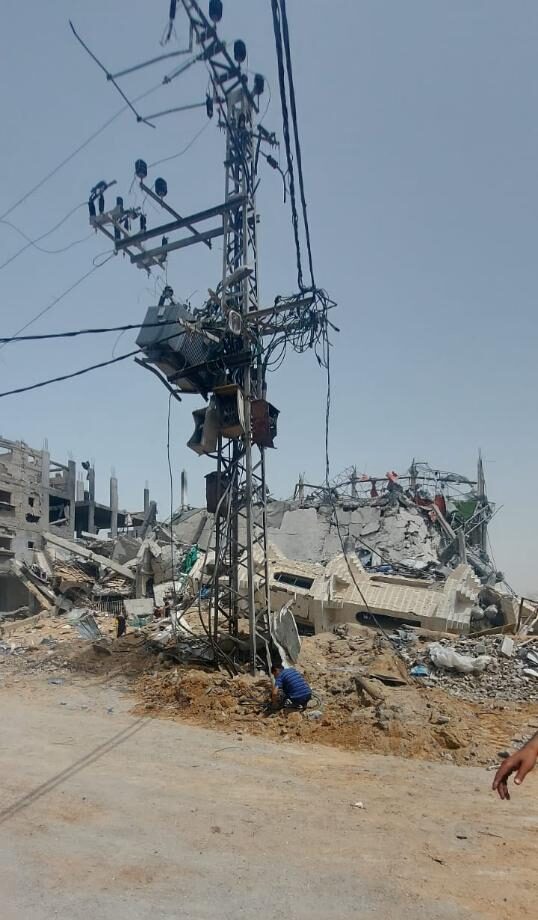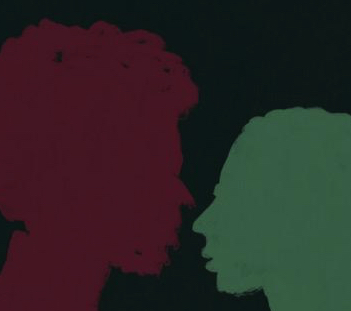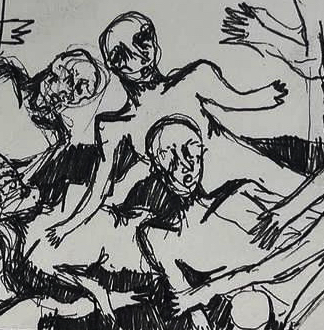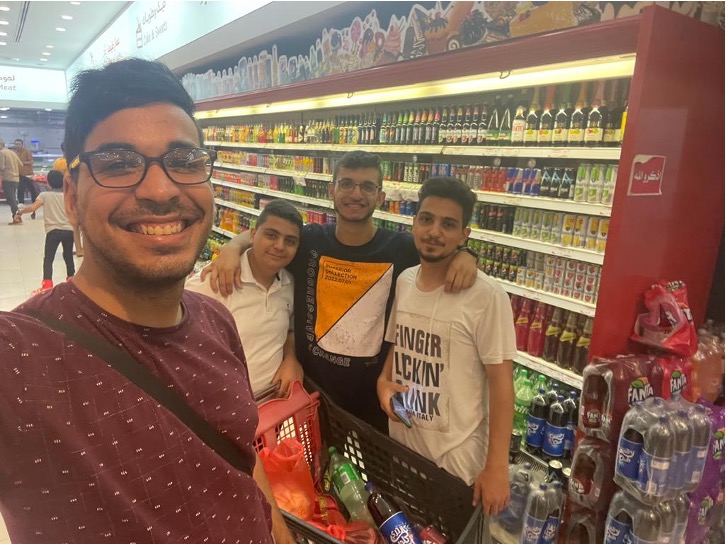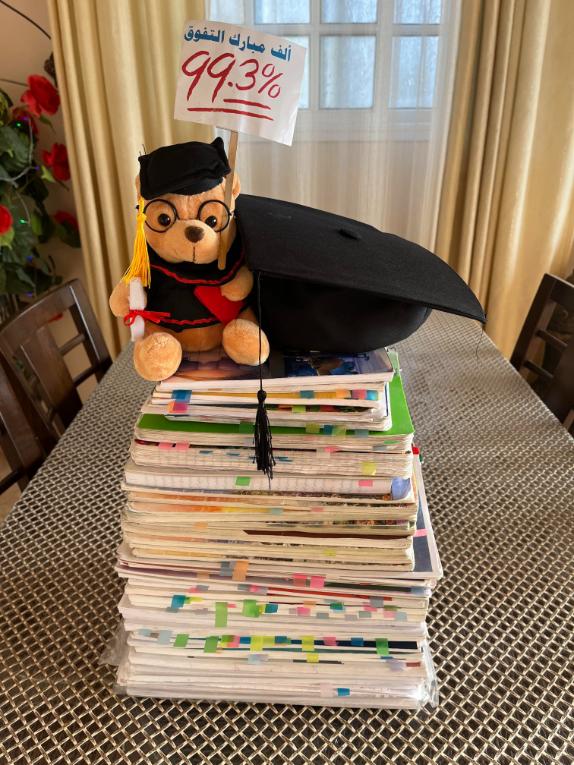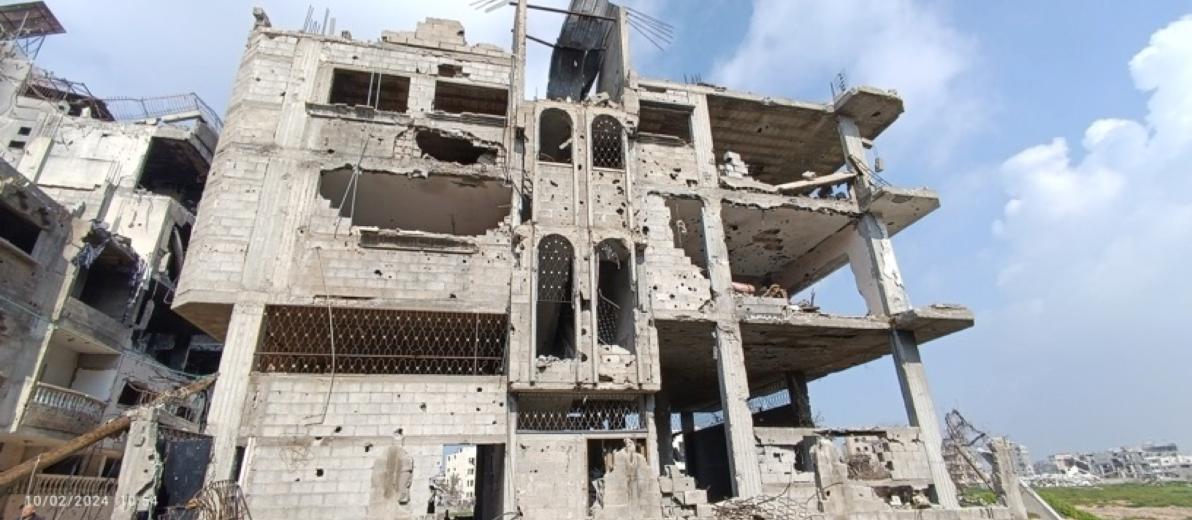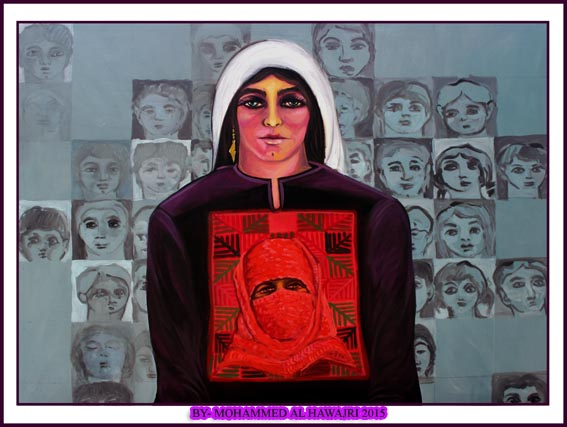
Art, in all of its forms, is a reflection of the creator’s "soul." One glance at the art of Mohammed Al-Hawajri is enough to take you on a journey to his homeland, the homeland of all Palestnians.
Al-Hawajri is a Palestinian artist from Gaza's Al Bureij Refugee Camp. He learned art not from school, but by practicing it–first, when he joined a workshop at the YMCA. Then in 1999, 2000 and 2001, he participated in the Summer Academy held at Darat Al-Funun (Khalid Shoman Foundation) in Amman, Jordan, where he won a first-place award.
In his work, he strives to balance his dreams with a reflection of the grim realities of life in Gaza. To do so, he uses various unconventional materials, such as plants, animal bones and spices. Al-Hawajri’s art “presents an intimate and personal portrayal of the status quo” as he puts it.
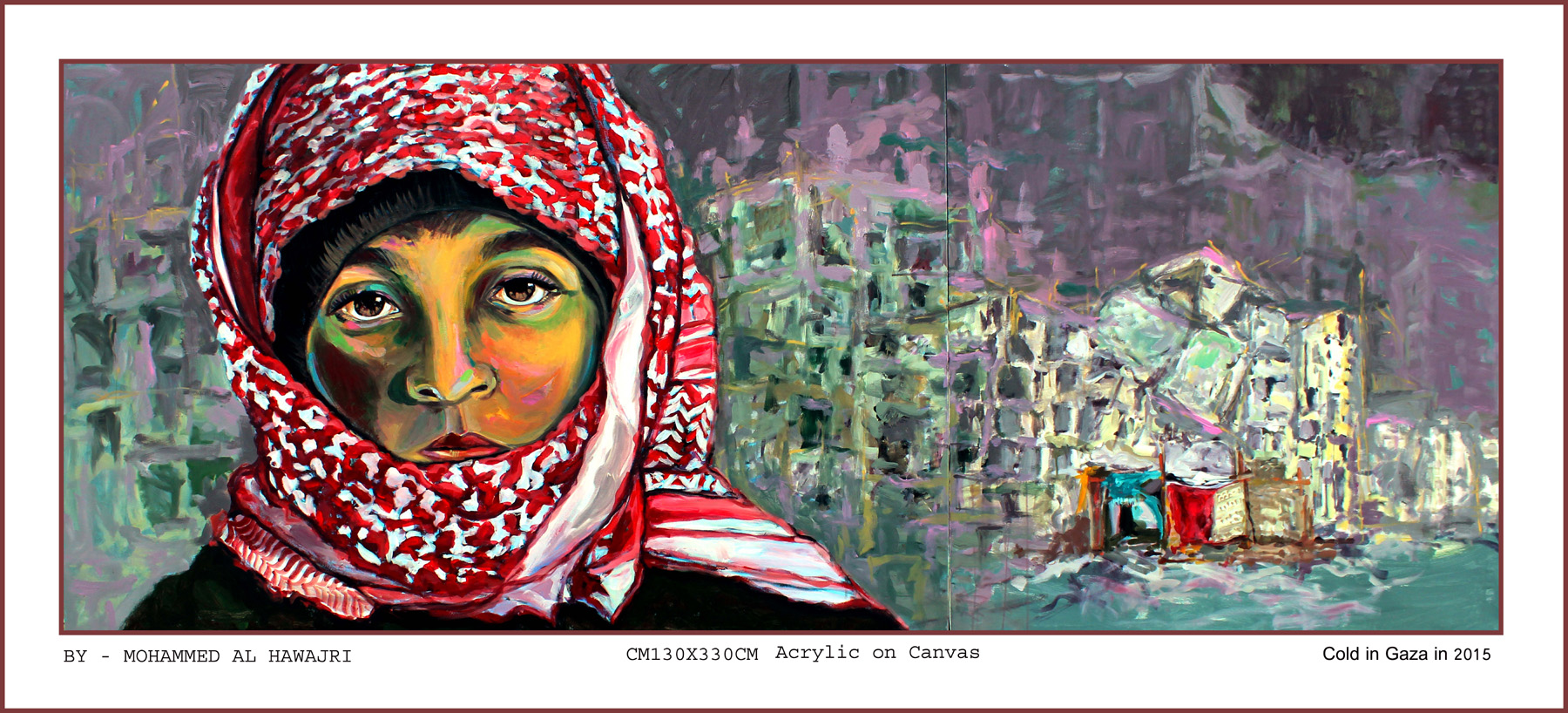
One of his creations is called "Cold in Gaza." Al-Hawajri painted it in January, four months after the latest Israeli assault. People were anticipating a cold storm and a long frost, and thus were taking precautions–buying warm clothes and gathering blankets. “A question arose within me, how are people managing, those people whose houses turned to rubble as a result of Israeli bombs?” he explains. “This painting came as a duty to illustrate the suffering of those people who have been deprived of stability, living in tents–refugees once again–unprotected from cold or heat.“
While some of Al-Hawajri’s art is a reflection of the status quo, other pieces are a celebration of Palestine’s history and culture. One such piece is called "Fabric of a Homeland." It was made using a sewing machine, illustrating the iconic Palestinian keffiyeh (checked scarf made popular by Yasser Arafat). The number 87 represents the start of the First Intifada in 1987, a popular Palestinian uprising against Israeli atrocities in which Palestinians adopted unarmed resistance and civil disobedience. Wearing a keffiyeh around the face to hide one’s identity when protesting was an often-used technique.
“The man behind the keffiyeh became a symbol, which led the masses to the squares and the streets, expressing their rejection of the brutal Israeli occupation,” Al-Hawajri says. “Those men behind the keffiyeh are the fabric of this homeland, they are icons in the history of the Palestinian national struggle.”
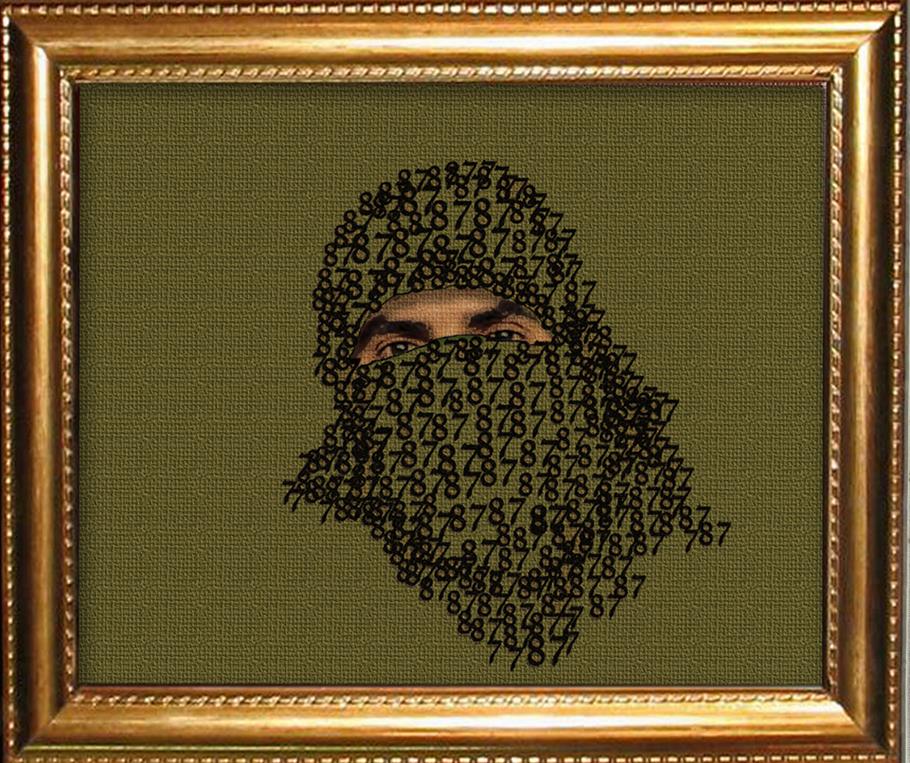
Al-Hawajri is one of the founders of the fine arts program sponsored by the Palestinian Red Crescent Society in Gaza in 2002. He also is one of the founders of Eltiqa of Contemporary Art, which was established in 2009. He has participated in solo and group exhibitions around Palestine and abroad. What helped him develop his talent? “Traveling,” he says. “I have traveled to Switzerland, Britain, France, Italy, Egypt and Jordan, attending workshops alongside artists from all over the world. I was exposed to different methodologies, visiting galleries and museums in each country I travelled to.”
Al-Hawajri believes traveling is an essential part of the life of an artist, opening new horizons of learning and knowledge. Unfortunately, however, travelling has become a struggle in itself for Palestinians in Gaza and a distant dream for many, due to the nine-year Israeli blockade and the closure of the Rafah crossing along the Egyptian border.
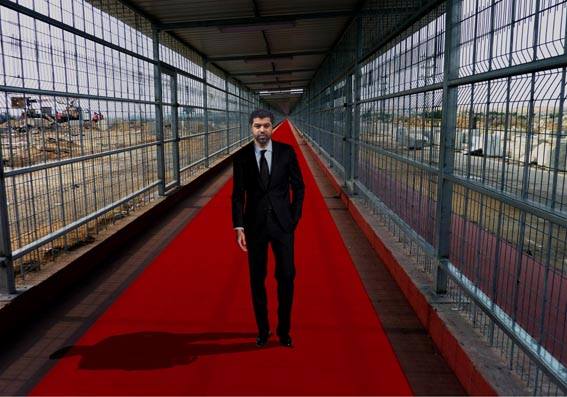
Gaza. Here, he is shown in the long, scary tunnel that marks the Erez crossing from Israel.
Mohammed is from Gaza and he is not a number.
Please donate to keep this project going.
Posted August 9, 2015
